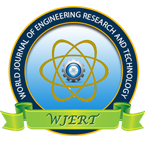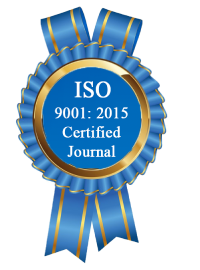| All | Since 2020 | |
| Citation | 172 | 110 |
| h-index | 7 | 5 |
| i10-index | 1 | 0 |
WJERT Citation 
Login
News & Updation
Abstract
EXTRACTION AND LUBRICITY ASSESSMENT OF VEGETABLE OIL BLENDS IN AUTOMOBILE ENGINES
Olawale, Kazeem Babalola* and Emmanuel, Simon Yayock
ABSTRACT
The Automobile lubricants in use today are based on mineral oil, though chemically stable and have excellent lubricating properties. However, there have been challenges with the use of such oils; such challenges include hassle of importation, high foreign exchange rate and impacts on the environment of both fresh and used engine oil. Exhaust emissions such as carbon monoxide (CO), oxide of Nitrogen (NOX) e.t.c from automobile engines based on mineral oils add up to planet-wide problem and climate change: the issue of global concern. This paper seeks to investigate the lubricity properties of vegetable oil blends formulated from castor and neem oil as an alternative lubricant in Automobile engines. The castor and neem seeds used for this research were oven dried at the temperature of 1050C, and then pressed mechanically in a drum to obtain high yield oil. The oil was then filtered to remove the various unwanted particles. Each sample of the oil was investigated of tribological and physiochemical properties. Castor oil showed high viscosity value of 65.33 cps when tested at 23.60C, the neem oil showed viscosity value of 12.00cp at 23.60C while mineral oil showed 22.5cps at 23.60C. Among other formulated lubricants, 60%neem oil and 40%castor oil blend showed an improved property in terms of viscosity value (27.33cps at 23.60C), saponification value (39.830), iodine value (81.23mg/g) and specific gravity (0.933). The high flash point temperature of 3270C from 60%neem oil and 40%castor oil blend confirms the absence of risk of fire during lubrication. The saponification test showed that castor and neem oil have 35.904 and 31.696 value respectively. From the cooling curves, it was observed that the thermal gradient of 60%neem oil and 40%castor oil blend is 3.57 which is steeper than that of castor oil (4.15), neem oil (8.43) and mineral oil (5.809). Hence, the steeper the thermal gradient of the cooling curves the shorter and faster the cooling rate. Tribology test conducted on all the formulated lubricants showed that the optimum blend has minimum Wear Scar Diameter (WSD) of 0.13mm, and therefore this is desirable during the boundary lubrication to protect the mating members from metal to metal contact. From the findings, it can be concluded that 60% neem oil and 40% castor oil blend possess the minimum requirements for an ideal lubricant and hence, it can replace the conventional mineral oil (engine oil) used in automobile engines.
[Full Text Article] [Download Certificate]
